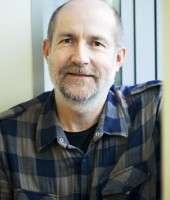Viktor Cerny
Viktor Cerny is Researcher in Anthropology at Charles University, Prague, and at the Institute of Archaeology, Academy of Science of the Czech Republic. In 1993, he graduated from Charles University, and in 1999 he obtained a PhD at the University of Bordeaux 1. In 2000, he founded the Archaeogenetics Laboratory at the Prague Institute of Archaeology. He is the author of The Peoples of Lake Chad (Academia, 2006, in Czech) as well as author or co-author of some sixty articles in the specialised press for archaeology, anthropology and biology, including several international journals in the field of human population genetics. His interest lies mainly in the ancient human settlement of Sub-Saharan Africa and Southern Arabia, and its related past migration patterns as evidenced through the mitochondrial and Y-chromosomal variability of contemporary populations in these areas. He was Mellon East-Central European Fellow in Paris (2000), in Sana’a, Yemen (2005, 2008), and Fulbright Scholar at the University of Florida, US (2009).
The African Sahel in the Late Pleistocene and Holocene was a place of pronounced climatic changes marked by fluctuations of biogeographical zones. During colder and dry phases human populations were forced to live within refugial pockets and to re-expand only when environmental conditions ameliorated. Signs of migrations are encoded in the genetic variability of extant populations. Recently, we have shown that the most recent branches of mitochondrial phylogeny concur in populations that can be grouped together along certain linguistic criteria as well. An example from the African Sahel is the case of the L3f3 haplogroup that occurs almost exclusively in Chadic speaking peoples living in the Lake Chad Basin. Such co-evolutionary phenomena can be interpreted as a consequence of past population fragmentation and demographic isolation. Only later Neolithic developments, especially such as the pastoral economy in Africa, allowed the more important spread of human populations and their admixture. My project presents plans for the preparation of a manuscript that will summarize the applicant’s long-term study of the population history of the African Sahel.
|
|
|
American Journal of Physical Anthropology Perspectives The American Journal of Human Genetics American Journal of Physical Anthropology Oxford University Press |
|
|

